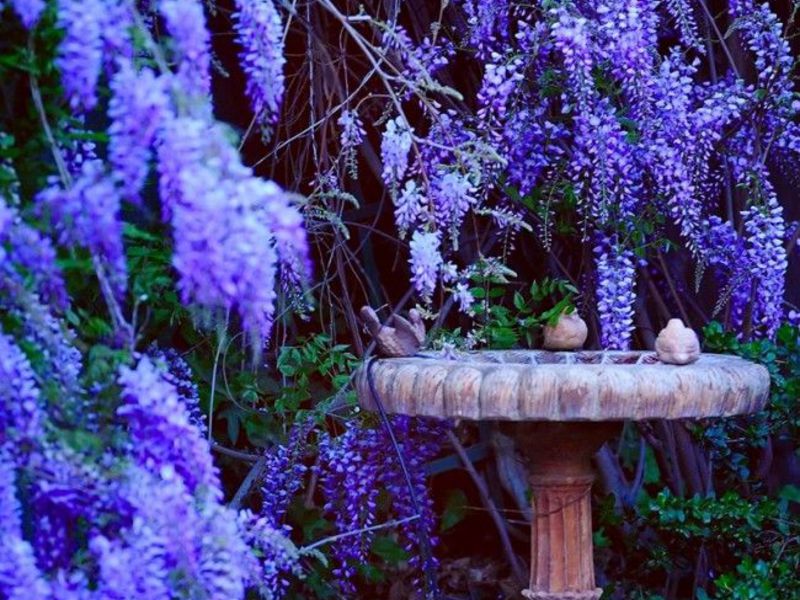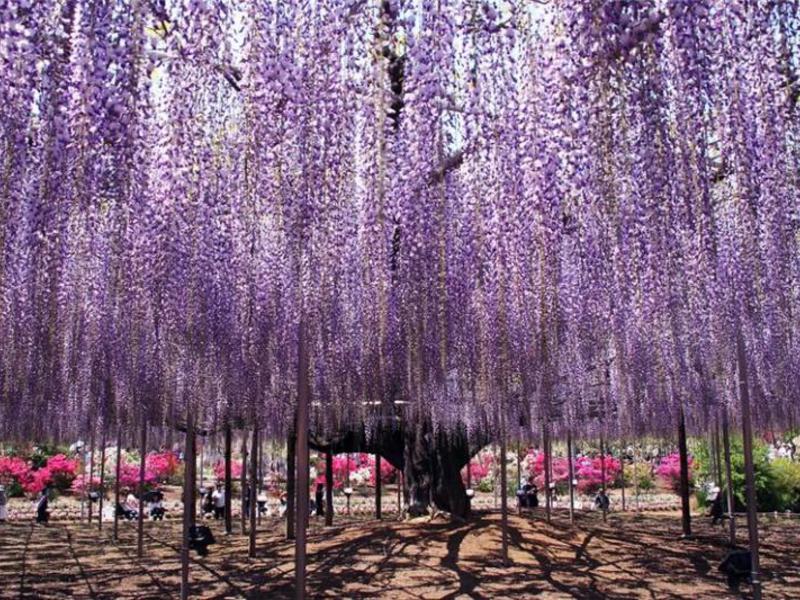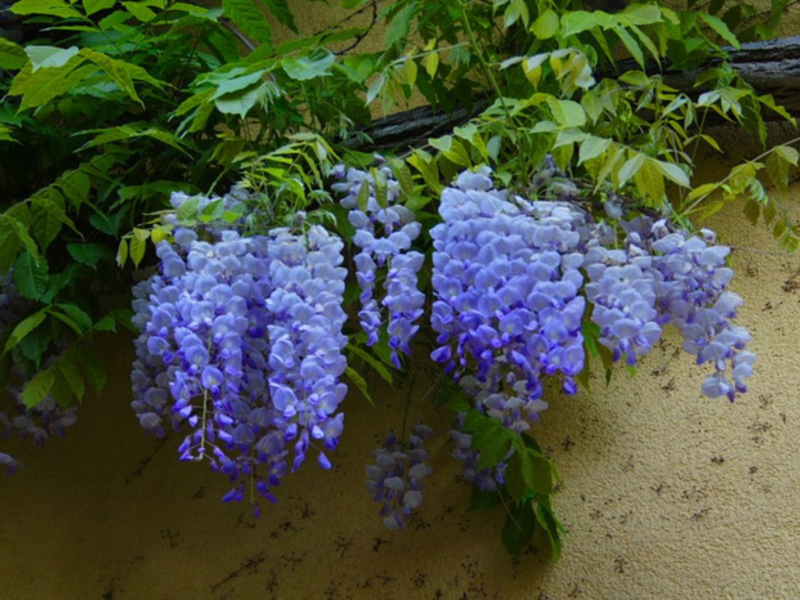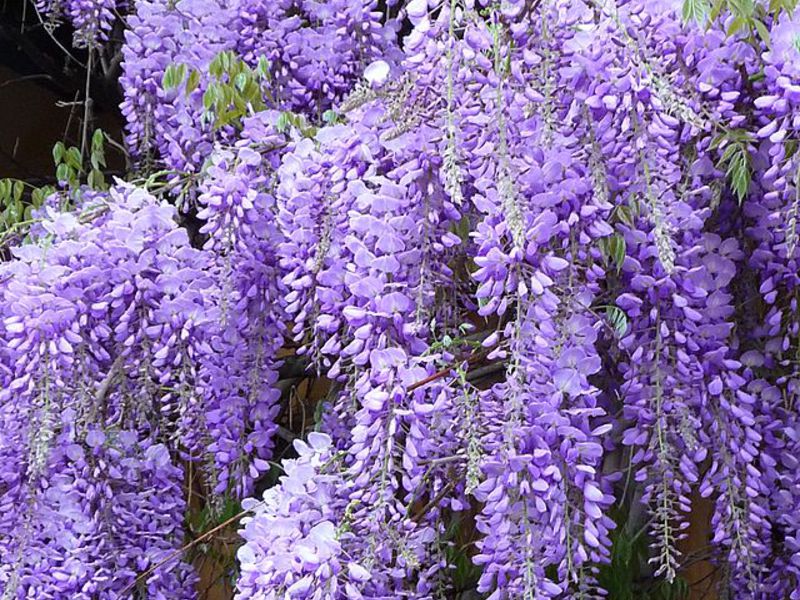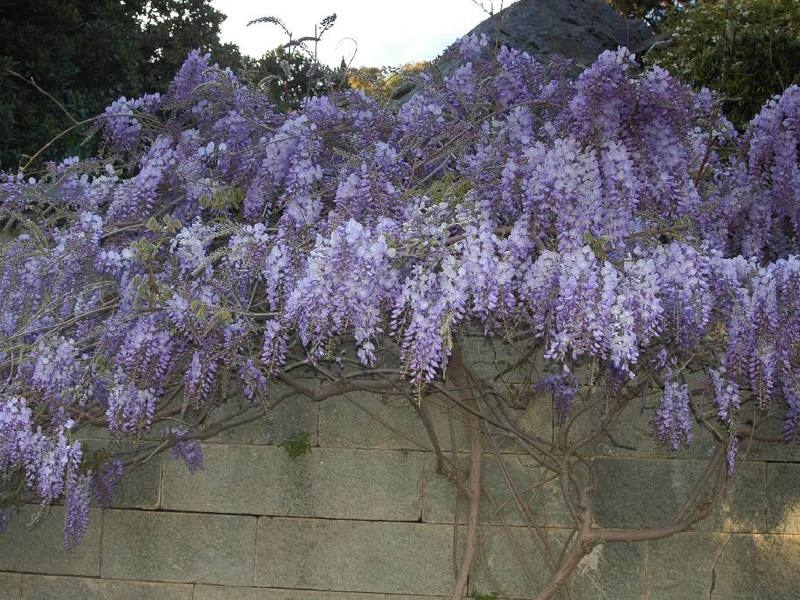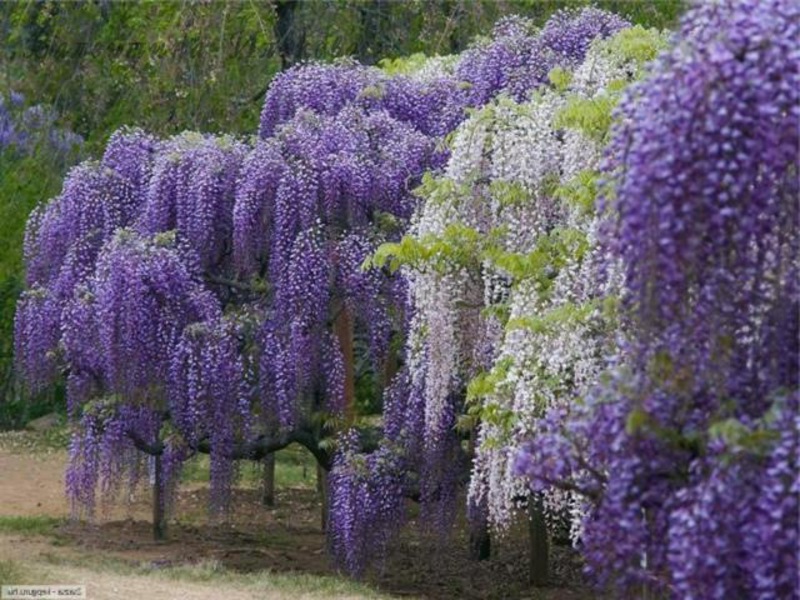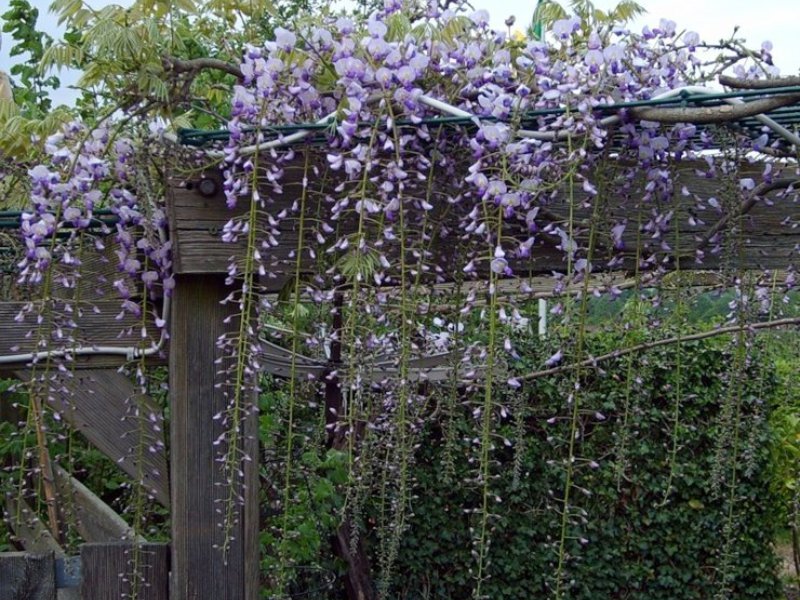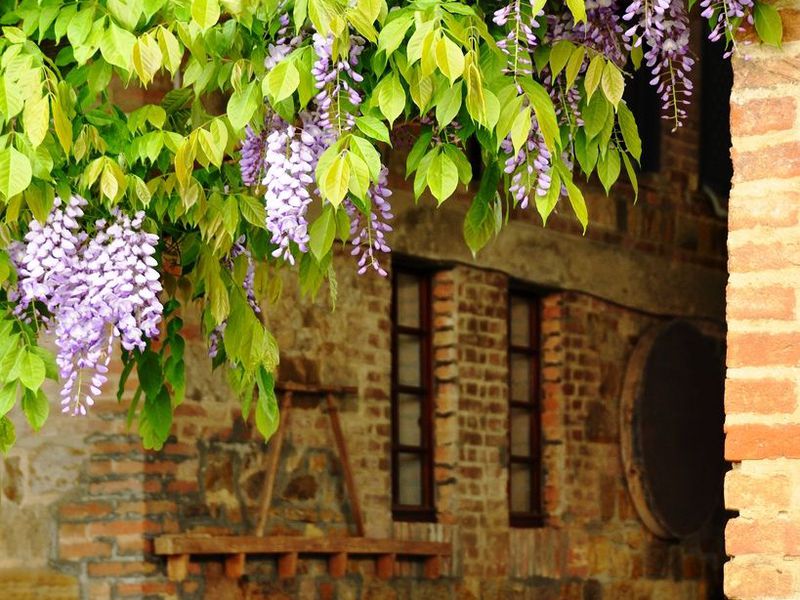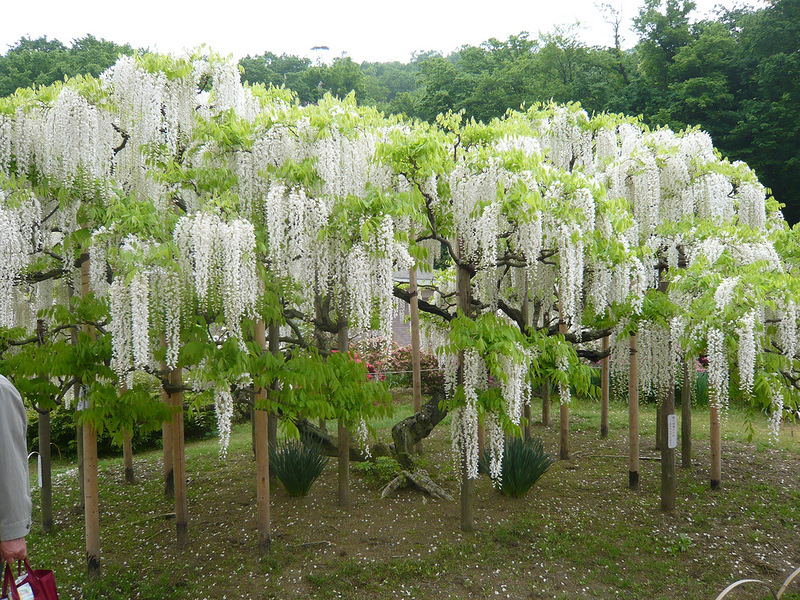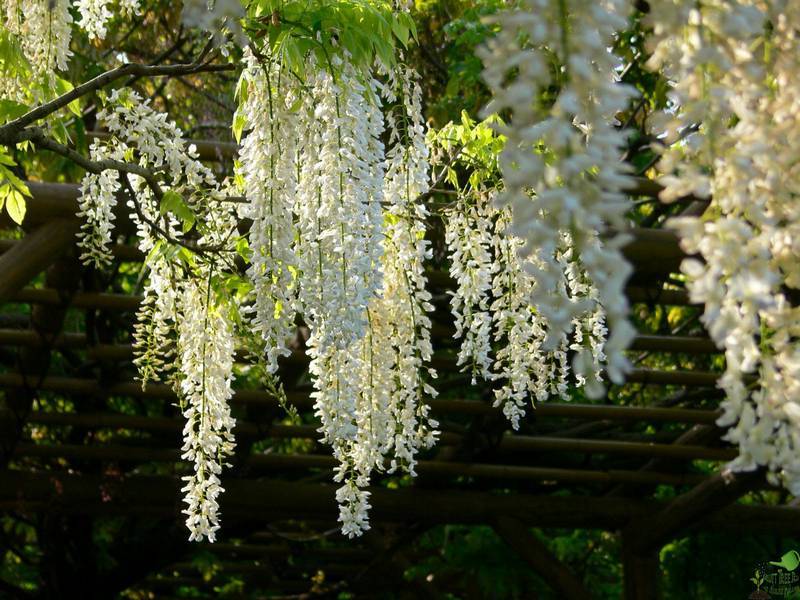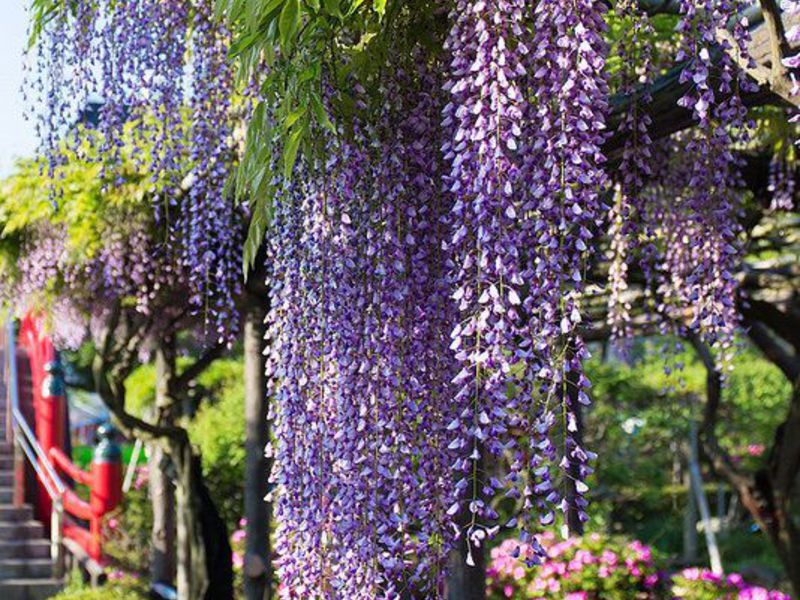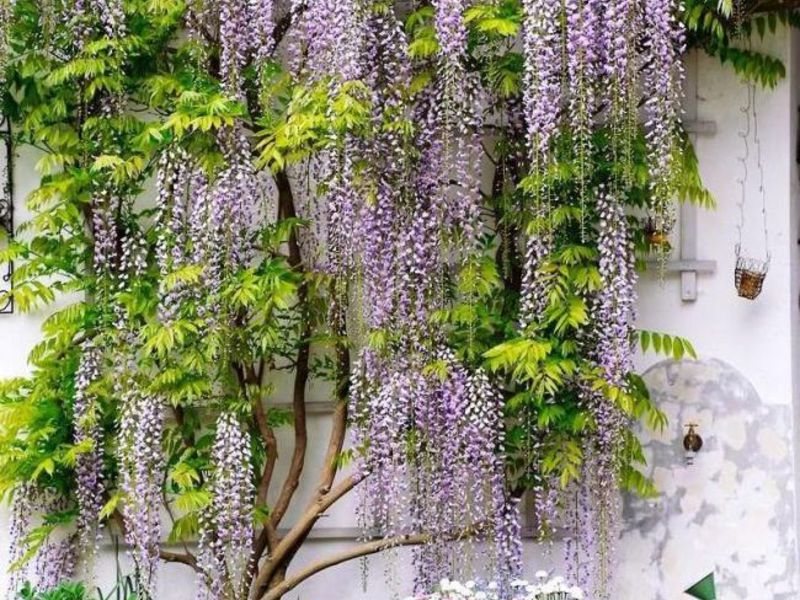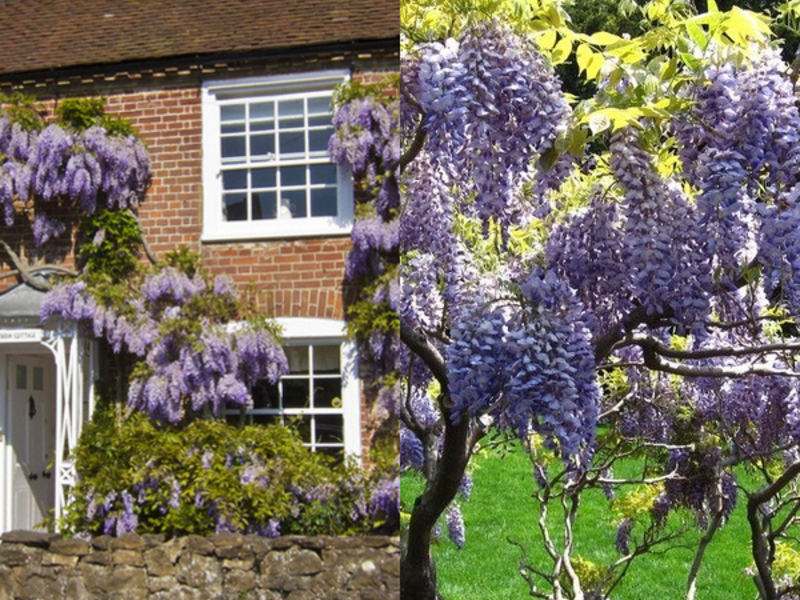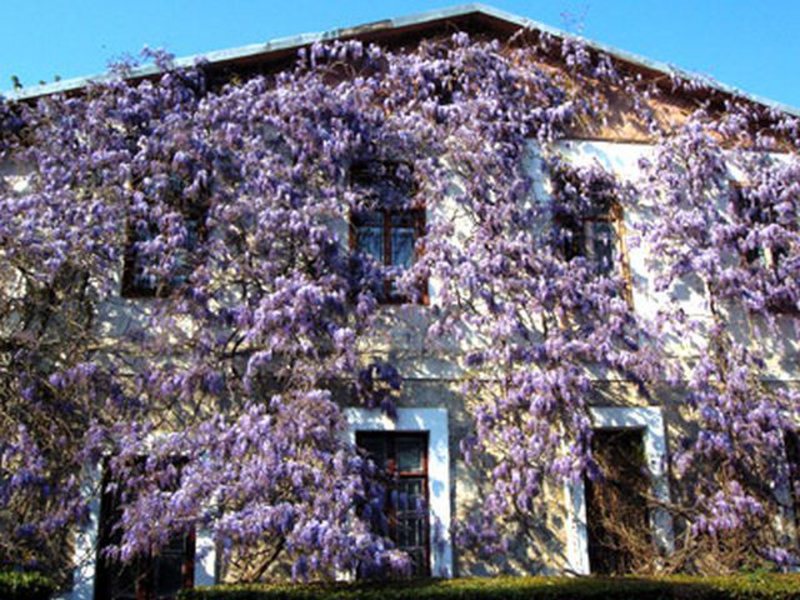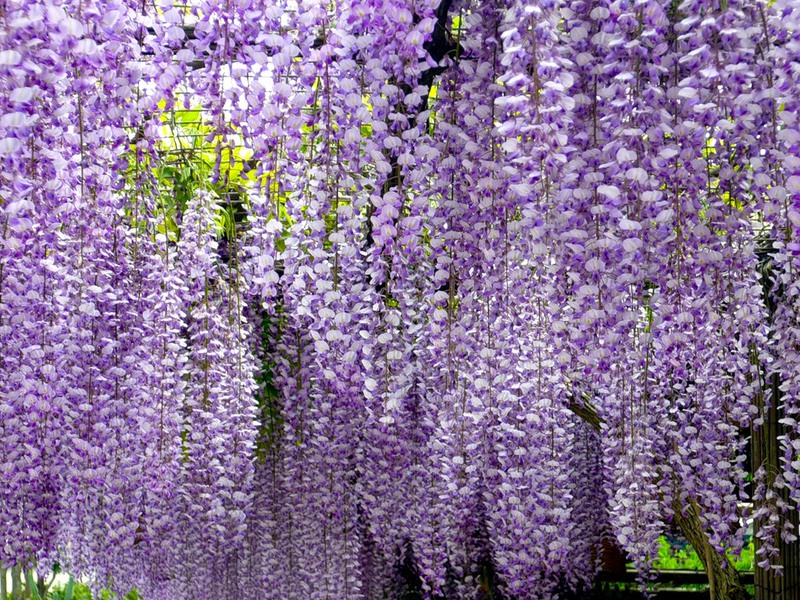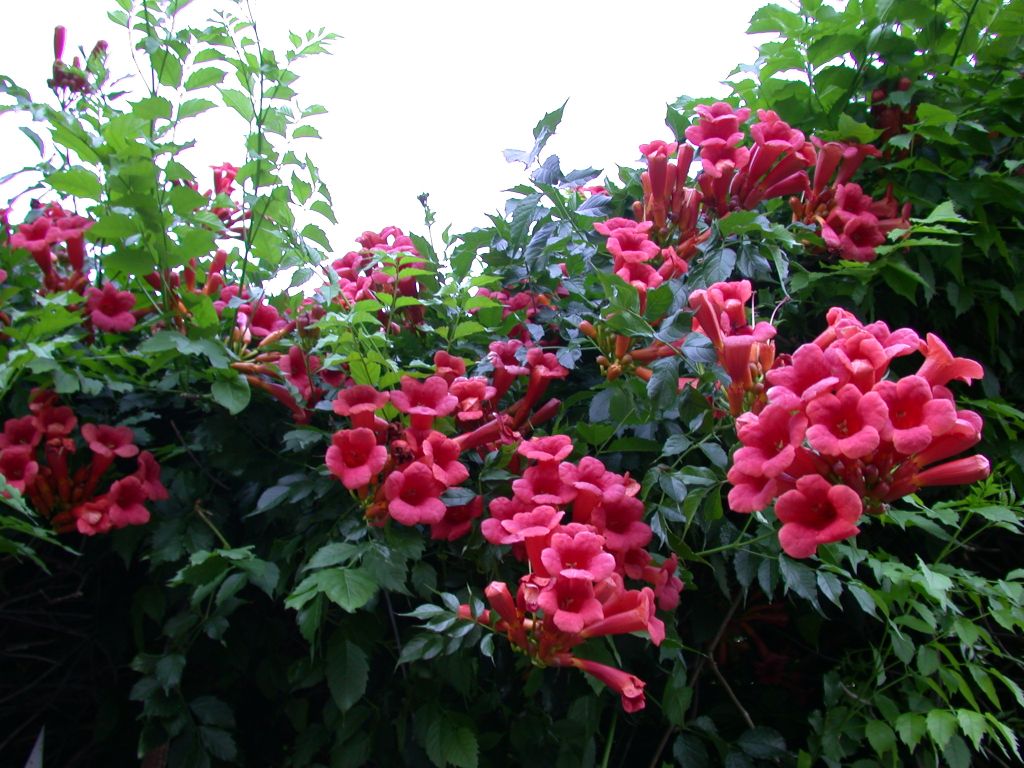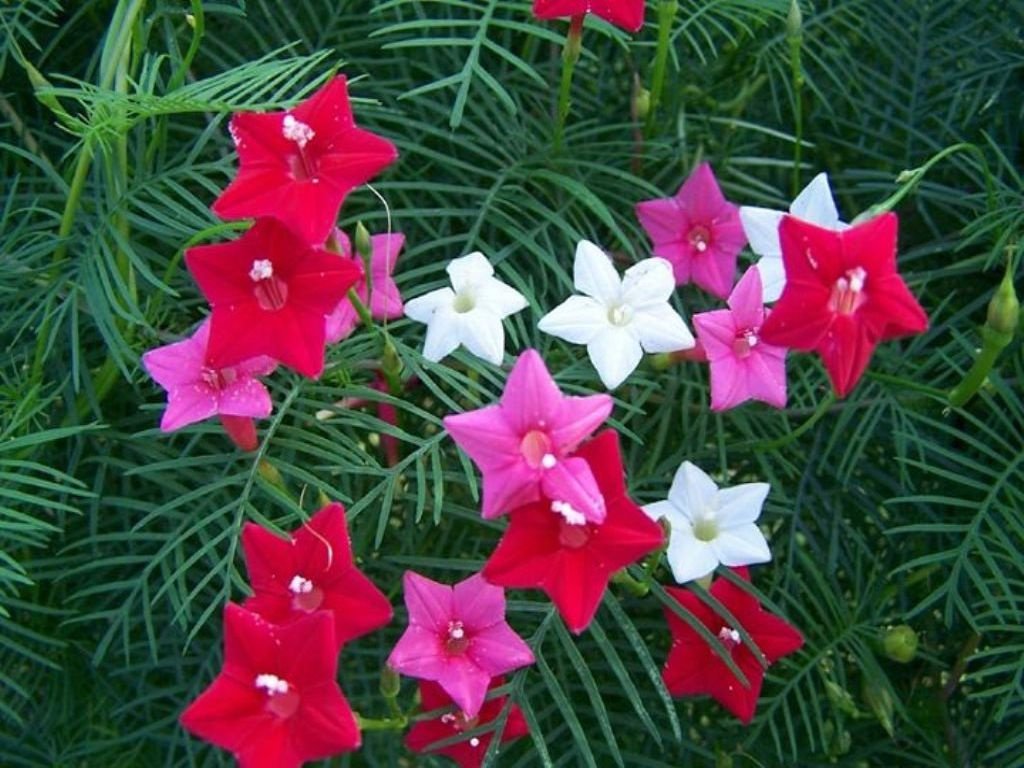The greatest joy and tenderness are delivered to flower growers by flowering and beautiful plants. One of the most beautiful representatives is Chinese wisteria. Planting her on a personal plot means getting a lot of worries. But the beauty of this flower will reward even gardeners who are intimidated by the difficult care and cultivation of this plant.
Photos in the instructions of florists show falling brushes, which are abundantly strewn with lush inflorescences, and their magical aroma will surely decorate any personal plot.
Content
Description and types of wisteria
In various sources, you can see the definition of wisteria as a flower or tree. But in reality it is a liana, with falling branches and a stiff trunk. Under the necessary conditions, namely, in carefully drained soil, under the hot sun, the stem of this plant can grow up to 20 meters.
In their natural environment, wisterias are found in the warm climates of Asian countries - Japan and China. This plant has long been planted in America. The young shoot has a rather thin stem, an adult liana can have a tree-like trunk up to 25 cm in diameter. On the trunk of the plant there are branches with lush leaves collected from small leaves.
In summer, wisteria forms flower brushes. Inflorescences in various varieties of this plant differ in color - pure white, purple, blue. The flower has a rather complex shape that resembles an orchid. The very pleasant smell of the inflorescence is the reason for the name of the vine. "Wisteria" is translated as "sweet".
Plant fruits - pods with fur bloom... Due to the structure of the liana fruit, it belongs to the legume family.
Varieties
Today there is 10 varieties of Chinese wisteriathat are in vivo. Florists grow only decorative vines. This is wisteria:
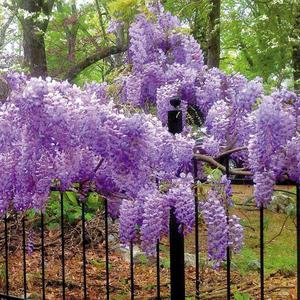 Macrostachia. This hybrid was bred specifically for cold climates - North America, Russia, Scandinavia. The plant is frost-resistant. On a personal plot, it creates an excellent braid for gazebos, terraces, and house facades. Brushes 35 cm in diameter and consist of lilac inflorescences with a pronounced odor.
Macrostachia. This hybrid was bred specifically for cold climates - North America, Russia, Scandinavia. The plant is frost-resistant. On a personal plot, it creates an excellent braid for gazebos, terraces, and house facades. Brushes 35 cm in diameter and consist of lilac inflorescences with a pronounced odor.- Alba. This type of wisteria blooms with white tassels. The aroma is slightly worse than that of other hybrids, but pure white inflorescences are more expressive, they are planted in city squares, in different flower compositions;
- Chinese. This variety creates quite beautiful clusters with aromatic bluish buds. In the backyard, this plant winds around the pillars of the terrace, gazebos, various frames;
- Floribunda. It is a Japanese plant that looks like a vine with 45cm clusters of various colors. There are also dwarf species of this vine. They take much longer to grow, creating a bush-like shape that is great for bonsai;
- Beautiful. A hybrid that turned out after the selection of the first two varieties, he absorbed their best qualities.Flower brushes are longer, up to 30 cm, flowers are larger, pure white.
How to grow wisteria?
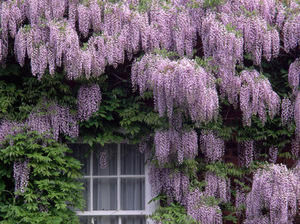 Wisterias - fast growing plantsthat immediately cling to any possible support. This quality has made them popular with both landscape designers and novice florists who appreciate the romantic style.
Wisterias - fast growing plantsthat immediately cling to any possible support. This quality has made them popular with both landscape designers and novice florists who appreciate the romantic style.
A developing liana requires a frame made of thick reinforcement, steel or wood. The more mature the plant, the thicker the stem and the heavier the green foliage. Small wisterias look great in pots as indoor flowers. The pot must be wide and equipped with a sturdy steel rod. Moreover, the liana looks great in a pot on the loggia.
Planting creepers in a personal plot will require reliable support... A lot of effort must be made and pruning vines. A heavily overgrown, massive plant will break under its own weight without proper pruning.
An ideal place for wisteria on a personal plot is a house facade, well-lit by the sun, a gazebo wall, or a special shed. Chinese wisteria needs constant warmth. Only under the sun will it bloom beautifully with a lot of inflorescences.
Experienced flower growers know that all varieties of this vine are quite capricious. Planting and grooming require great care. There are a number of rules to keep in mind:
- liana, which is planted from seeds, will begin to bloom only after 8 years;
- seedlings purchased in stores take root up to 4 years old, before letting flower buds;
- before flowering, it is necessary to fertilize the soil near the roots weekly;
- it is not necessary to water the vine strongly, but constantly;
- sometimes the plant does not bloom for several years. This vine needs to be "pushed" by adding potash groundbaits to the ground in autumn;
- it is advisable to avoid nitrogen additions. In legumes, nitrogen creates a strong deciduous mass, but not the formation of inflorescences.
Pruning
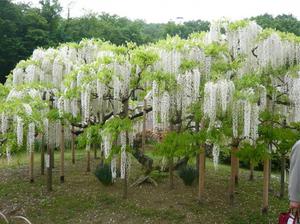 For a more beautiful flowering, the plant requires prune 2 times a year... Large branches form in the summer, after a couple of weeks, when the brushes dry and fade. In this case, you can correct the wireframe. Small vines are cut in the fall.
For a more beautiful flowering, the plant requires prune 2 times a year... Large branches form in the summer, after a couple of weeks, when the brushes dry and fade. In this case, you can correct the wireframe. Small vines are cut in the fall.
In winter, these manipulations with wisteria cannot be performed. In winter, the vine forms buds of inflorescences, and you can accidentally cut off the most beautiful and large ones.
In the fall, it is necessary to remove all dead parts of the shrub that interfere with the germination of young branches. Experienced gardeners recommend looking at the vine from a distance of 7 steps. So the difference in color on old branches and new shoots that grow from them is better visible.
Side branches need shorten to 20 cm... The old branches are also made smaller so that there are only 5 buds. This will help the vine to concentrate its vitality on creating inflorescences on short branches.
In the summertime, you can perform the same procedure with side branches, leaving a few leaves on each shoot. It is necessary to cut off large "clinging" branches in the form in which they decided to line the vine. Pruning won't do any harm. Elastic shoots They will grow rather quickly, and will fix where they are directed.
How do I prepare the seeds?
Large pods make the plant look less attractive in spring. It is advisable to cut them without removing a significant part of the stem, since there may be buds of inflorescences.
You can plant this plant from seeds that are collected from the pods. Remember - the new plant will not be identical to the mother vine.
Ripened pods placed in a large cardboard bag and left to dry in a warm place. For example, you can leave a package on the torpedo of a car for several weeks. When the pods are open, the seeds are easily removed from the shell.
Planting in a deep pot is required for cultivation. The seeds are deepened into the ground by 3 cm and watered. It is advisable to use a mixture of soil with the addition of sand for growing.The seed pot must be placed in the shade. Many growers cover the pot with glass to prevent heat loss. All the time of germination, it is necessary to add water so that the soil is constantly moistened.
When shoots appear, the pot must be rearranged to a lighted area (not to direct sunlight). When the shoots form several leaves, they transplanted into different containers... Do not transplant small seedlings directly into the ground. Liana must grow at least 25 cm.
How to grow wisteria in the suburbs?
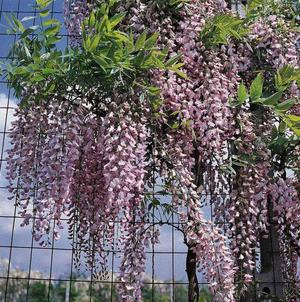 The natural habitat of this plant is the tropics. In the northern regions, the liana suffers from frost. Many varieties of lianas cannot even endure autumn in our climate. The minimum temperature for a plant should be at least 10C. Even when the roots survive in the soil and then create shoots, the frozen specimen will not throw out the inflorescences for a long time.
The natural habitat of this plant is the tropics. In the northern regions, the liana suffers from frost. Many varieties of lianas cannot even endure autumn in our climate. The minimum temperature for a plant should be at least 10C. Even when the roots survive in the soil and then create shoots, the frozen specimen will not throw out the inflorescences for a long time.
This plant in the Moscow region develops well only with special protection in the winter. Florists place seedlings in the first spring not in the ground, but they are planted in special barrels. For escapes a container of 45-55 l is required... Liana needs strong support, as well as a garter.
In autumn, you need to follow the weather forecast. If the temperature drops below 15C at night, the plant must be moved into the house. It is desirable that it be a basement or cellar.
In winter, the vine is inactive. The plant does not need bright lighting, watering can be done every 7 days. In a very warm and bright room in winter, the vine will die. Already from the beginning of spring, the barrel with the plant is moved to the light part of the room, and watering is carried out every two days. When the temperature at night is over 10C, the vine can be placed on open ground.
An adult vine needs to be spud before winter. In this case, the plant is removed from the supports, fixed to the ground and covered with straw, leaves, unnecessary clothing. By this time, the bulk of the shoots must be cut off. With secure cover, wisteria can tolerate temperature about -22C.
Caring flower growers achieve the survival of the plant for many years, as well as double flowering of wisteria. Growing vines from maternal vines makes wisteria more resistant to frost.
The main disadvantages of wisteria
Certain natural specificity this plant can greatly perplex the grower who first grew wisteria:
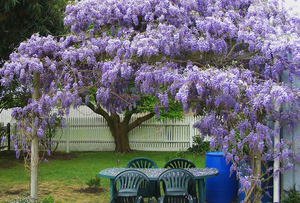 you should not choose a living tree as a support for this plant. Liana will eventually "strangle" the tree with powerful lashes. The plant can only be fixed near dead and dried trees;
you should not choose a living tree as a support for this plant. Liana will eventually "strangle" the tree with powerful lashes. The plant can only be fixed near dead and dried trees;- the vine develops late foliage in spring. Its bare branches will begin to contrast with the greenery of the rest of the plants that has appeared;
- flowering is not constant, and not intense all the time;
- in hot weather, the leaves of this plant acquire a dark brown hue;
- the increased allergy and toxicity of liana pollen makes it impossible to grow it in the backyard, where small children often walk;
- the foliage and fruits of the creeper are very poisonous. After contact with the plant, the whole body should be thoroughly washed with soap.
Chinese wisteria creates a magnificent romantic atmosphere on the backyard. This vine can fit perfectly in any landscape design, masks the facades of old houses, as well as dead trees. The aroma of blossoming inflorescences is very pleasant to the sense of smell, and also clears the air space from pathogens. Caring for a vine is quite difficult, but the result will reward you for all your efforts.
